I haven't been out as much this year but here are a few finds from the archive. I've been backing up photos on my phone to clear up space lately.

Here is Aureoboletus russellii, I thought it was a frost bolete at first but then realized the cap was way too small and the pore colors weren't red. Fortunately this one tastes even better than the frost bolete. Many of these highly rough stemmed boletes are edible.
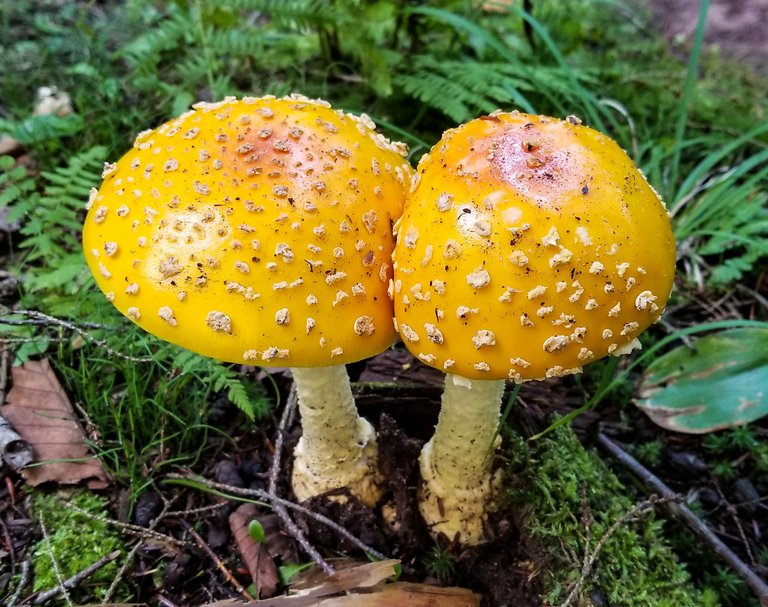
Spring was great for the Amanita muscaria var. guesowwii. They are basically the yellow version of the more iconic red Amanita muscarias. Their hallucinogenic properties are also much more muted than the red ones or so I've heard/read.

Not a mushroom but a hedge apple, or as the locals call them monkey balls lol. Sadly they are toxic and have no use other than drying them and spray painting, then using them as a Christmas ornament.
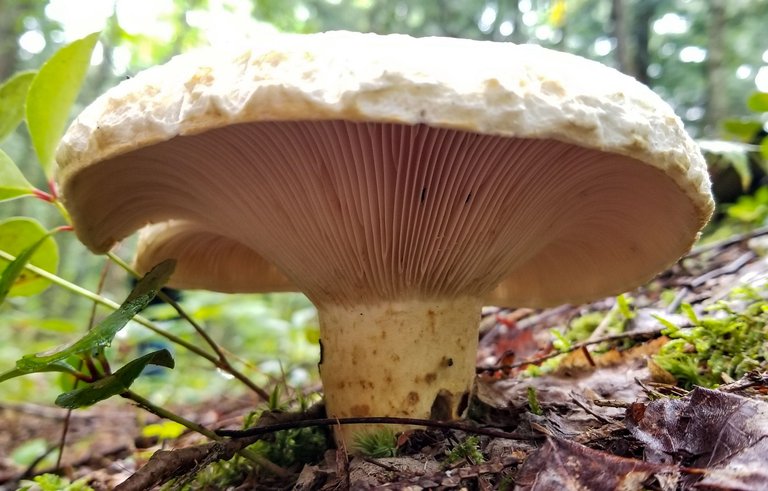
These Lactarius piperatus are quite common during the rainy part of the end of summer here. They are edible but are also super spicy. Imagine eating solid black pepper with some cayenne pepper and a long afterburn, that's what these taste like. The only use I've found out of them is to dry and powder them then add a touch of the dust to a soup to spice it up.

Here are some earthstars belong to a group of fungi called Gasteromycetes. I'm not sure which exact Latin name these have but they are still in their bulb form before they hatch out into a star.
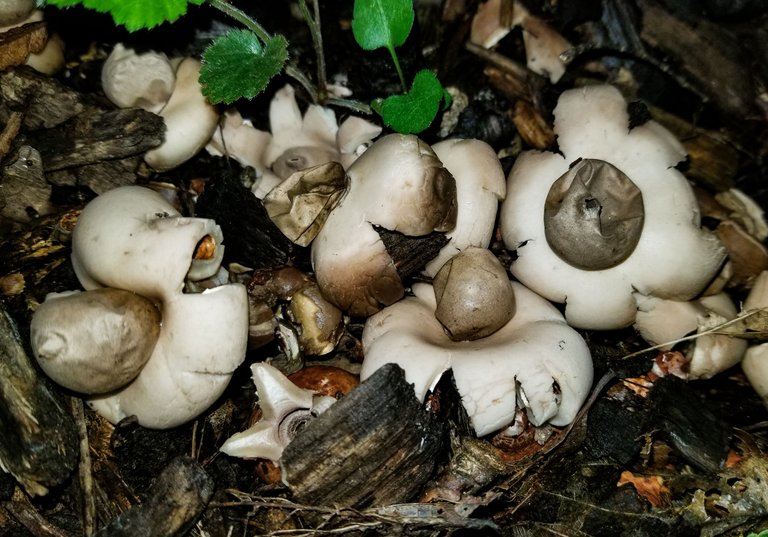
Here is what the earthstars hatch into. They are kind of a mix between stinkhorns that smell bad and puffball mushrooms that spew spores out of the center. I've seen some people say the bulbs are edible but have a strong raddish taste and who knows if every variant of these are safe to eat. Thus I've never tried eating one.

Here is Lion's Mane in the Hericium family. These are a nice mild tasting mushroom with lots of health benefits. They call it a nootropic as it helps the brain form new connections and grow new cells protecting against dementia and other neurologic disorders. The specific compounds in it that are good are hericenones and erinacines. I take a liquid supplement of this everyday and I eat it whenever I find it. You can also easily grow these from kits online.

Here is a slight variant of Lion's Mane called Bear's Head Tooth aka Hericium americanum. It has all the same beneficial compounds as Lion's Mane and it tastes exactly the same. For some reason it grows in a more spiky form rather than a pom pom form. I found this one camping and cooked it with some eggs.

Mushrooms are everywhere, even in the middle of Chicago.

This is a fresh young oak bracket growing on a city tree. It eventually dries up to a black color and falls off the tree. The Latin name is Pseudoinonotus dryadeus and its an inedible mushroom due to taste and texture, fortunately it is not poisonous. Who knows maybe it has some medicinal qualities that haven't been discovered yet.

Here is an oak bracket with too much rain on it. They really show alot of guttation (water beads) which can look pretty cool as an itchy looking texture.

Here is a nice big batch of honey mushrooms. There are quite a few types of honey mushrooms but these yellow ones are Armillaria mellea. They are edible with quite a few stipulations in cooking. These types have tough stems so only the caps are eaten. They are not a beginner mushroom as there are deadly lookalikes and even then a lot of people are allergic to them and get stomach aches. Then you have to be sure to thoroughly cook them and on top of that they produce a lot of slime. They kind of resemble cactus slime from nopales. I've found that a few of them work well in a soup to thicken it. Another cool factor to these yellow honey mushrooms is they are bioluminescent, so if you take a long exposure photo of them in the dark you will get a green glowing mushroom photo.

These cute little huts are Reddening Lepiotas aka Leucoagaricus americanus. They are edible but you have to identify them carefully as there are quite a few poisonous lookalikes. Their fat stem base, brown nipple and scales are a good start at identification. But the final test is to cut one in half to see the interior flesh stain red hench their name reddening lepiota. The caps are the most edible part and they taste quite a bit like meadow mushrooms or for a more common comparison store bought button mushrooms. Their texture is a bit more firm though.
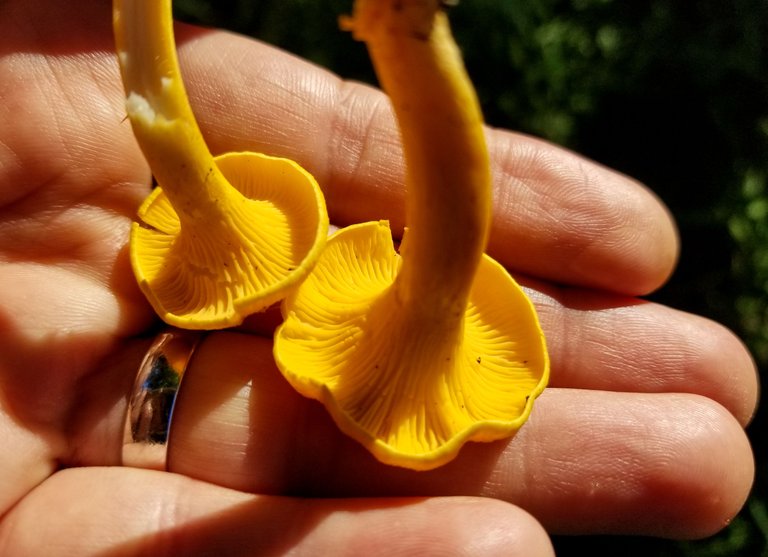
Each year brings plenty of chanterelles. These are a good beginner mushroom that is easy to identify and easy to find after summer rains. Loads of them grow under maple and oak trees in dark soil. They taste great in almost any dish. I usually end up with many extra ones so I dehydrate them. After dehydration they crumble into powder easily and this powder is a great addition to eggs or soup.

Here are some bay boletes a nice edible bolete that is almost as good as the king bolete. They only grow for a brief window of time here during the hottest of summer rains near oaks and evergreens. They don't really stain as much as other boletes but eventually the pores stain dark gray. I usually avoid boletes that stain blue as they can cause stomach aches.
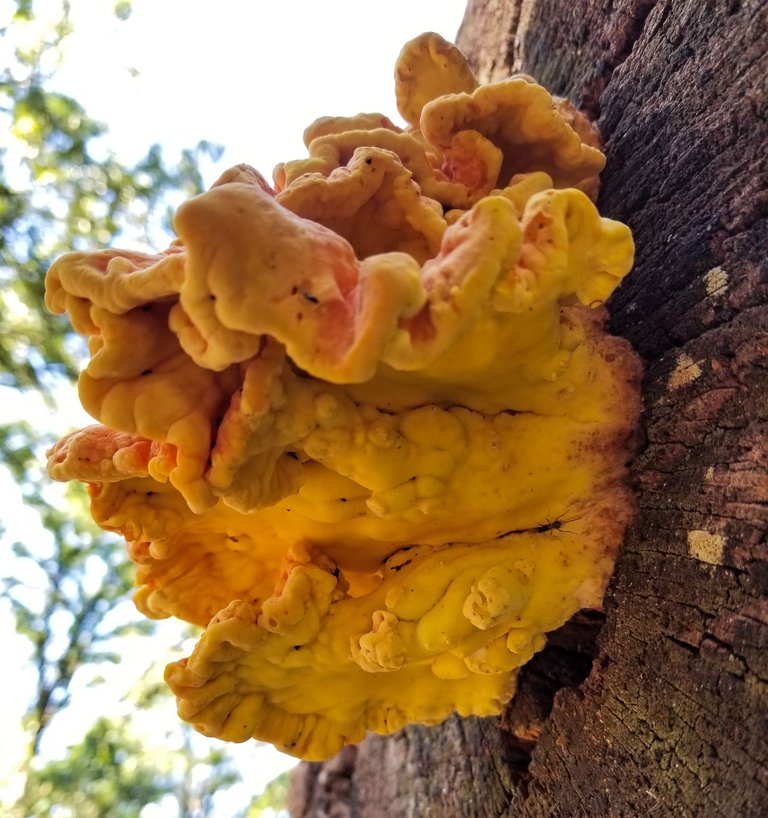
This is my favorite mushroom to find, chicken of the woods. Another nice summer and fall find. It tastes just like chicken and even has a similar texture as chicken. The trick is finding it before it gets too tough. As it gets old it turns white, I'll often take note of where the white ones are growing and look back there the next year to find younger ones growing.
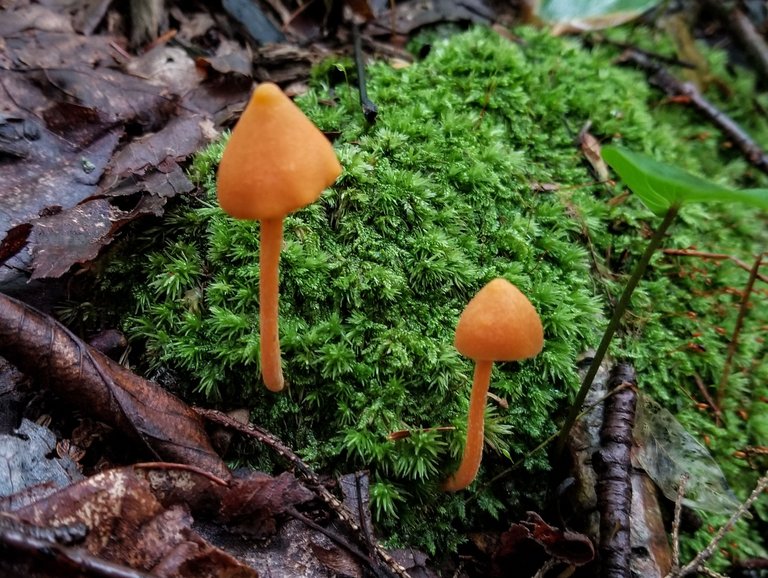
Here are some cute looking conical mushrooms. I used to think they were just orange mycena but after a bit more research I realized they are called flame mycena (like candle flame) with a Latin name of Mycena strobilinoides. Edibility is unknown and with most mycena species I bet it doesn't taste very good.

Here is a typical giant puffball aka Calvatia gigantea. They are good to eat so long as the interior is solid white. When cooking be sure not to burn them as they end up having a gamy taste. I tend to smother them in marinara sauce in order to counteract their foamy dryness.

Here is Punctularia atropurpurascens which is a purple crust fungi. Generally this is considered quite bad for trees but it does have a use for making natural dyes. I'm not sure of the process of extracting the color though.

Here is a nice beefy edible mushroom known as the Elm oyster Hypsizygus ulmarius. The trick with these guys is I usually only find one and its really high up in the tree. So its rare to find enough of them for a meal compared to typical summer oyster mushrooms.

Here is Mycena leaiana or commonly known as Orange Mycena. They just look cool but don't really have any edibility or medicinal uses.

This orange mushroom is edible though. Its common name of witch's butter relates to its creepy gooey texture. This mushroom has no taste and pretty much only works well in spicy soup for texture.

Here is a nice plump squishable batch of wolf's milk slime mold aka Lycogala epidendrum. Another inedible mushroom but it sure is fun to pinch and see orange puss come out of the globules.

Meadow mushrooms are fun to forage but they are super tricky to differentiate between many poisonous lookalikes. If they grow in a grassy meadow that is a good sign, but then you have to make sure they have pink gills and brown spores. As they get older the gills turn brown.

In contrast here is a poisonous version with whitish greenish gills that also make a green spore print. This is Chlorophyllum molybdites and is commonly known as the vomiter. It will give you a bad stomach ache and lots of heartburnish vomiting. I like to know toxic mushrooms even more than edible ones so I don't make a mistake.

Now that it is winter, these are the only things I have to look forward to foraging. Their common name is winter mushroom and their Latin name is Flammulina Velutipe. Be weary though they can be confused with a lookalike called deadly galerina. One sure way to differentiate them is by doing a spore print. Winter mushrooms have white spores while deadly galerinas have brown rusty spores.
That's all for now, hopefully I can forage better this next year.
Thanks again @ewkaw :-)
Quality post 👍 great variety of mushrooms. I had a slow year foraging also. Maybe because my son was really busy at work and he usually drags me along on his trips. I'm off on a short trip back home to Kansas. Lots of hedge apples in eastern Kansas. Farmers used the hedge trees to separate pastures. There are lots of the old hedges still around.
I'm hoping to get back into the flow of foraging this spring now that my daughter can walk long distances, less fussing around with the bulky stroller on easy paths and whatnot. I've heard that the hedge apples can be used to repel insects by leaving them around your house, not sure if it really works though.